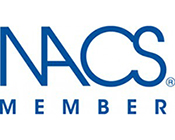Glossary for CB's, Radar Detectors, Scanners and Antennas
Introduction
This is a self-instructional training guide designed to familiarize you with the basics of the electronic division of the truck stop business. As a salesperson, you will receive many questions concerning Scanners. This guide contains some general information and common questions asked about these devices.
After reading this guide, you should be better qualified to offer information to your customers and to help them select the item that best suits their needs. We encourage you to use this guide as a tool and refer to it often.
AC – Alternating current
Alarm Lamp – Amber incandescent lamp that illuminates where radar signals are received and blinks at an increasingly faster rate as the radar source gets closer.
Alarm Test Switch – Enables volume adjustment for the audible alert and permits manual test of alarm to ensure operation readiness.
ANL – (Automatic Noise Limiter) Acts as a filter, chopping holes in the received signal and substituting periods of silence, thereby reducing the static that the receive picks up from manmade sources such as car ignition, machinery, etc.
Antenna – Used in sending and receiving electromagnetic waves.
Audible Alarm – Electronic tone that sounds when radar signals are received, when in combination with the alarm lamp, sounds at a faster rate closer to the radar source.
Band – A range of frequencies between two definite limits.
Band Width – The spread of frequencies a detector is sensitive to above or below, the operating frequencies. Example, if the operating frequency is 10.525 GHz, a detector with a band width of 100 MHz would pick up signals from 10.52 – 10.530.
Base – Intended for use in one place, generally a desk or table top transceiver.
Beam – Type of highly directional antenna (radiating in one general direction, but capable of providing high power gains).
CB – Citizens Band.
Coax – Coaxial cable used to connect the antenna with the transceiver.
Constant Radar Broadcasting – A radar gun being on all the time, not being triggered on and off as is “instant on”.
Cosine Error – The phenomenon which causes radar guns to give a lower reading than actual speed. Radar can only measure accurately the speed of an object moving directly towards or away from the antenna. If an object moves at an angle to the antenna, it will read only a portion of the speed.
DC – Direct current.
Decible (db) – Unit of measure for the boundaries of sound. A numerical expression of the relative loudness of sound.
Delay – Adds a delay to any channel so that call replies will br heard before scanning is resumed.
Delta Tune – Compensates for a signal which may be slightly off frequency. Operates just like a fine tuning control on a TV set.
Dim Switch – Adjusts the brightness of all indicator lights for a day or night driving.
Distinguishing – Gives different sounds or separate lights for the X and K bands.
Doppler Principle – A phenomenon of physics where a frequency can be effectively raised of lowered by a moving object.
Duplex System – Uses two frequencies, one for the base station and one for the mobile unit.
Dynamic – Adjust the microphone output to the user voice level to achieve 100% modulation without distortion. Allows user to speak at normal level without having to shout to be heard.
DX – Long Distance.
Falsing – Triggering of radar from something other than radar.
FCC – Federal Communications Commissions.
Frequency – The number of complete oscillations per second of an electromagnetic wave. Simply a channel that traffic radar is tuned. A radar detector must be tuned to the same in order to pick up its signal. Similar to radio stations. Each station has its own number. Traffic radar only uses two frequencies and radar detectors are already tuned to these frequencies.
Hz – Hertz (cycles per second).
Highway/City Switch – “Highway” position ensures maximum range and sensitivity, “city” position reduces interference from non-radar signals in urban areas with minimal reduction in sensitivity.
Hold (Scanner) – Stops searching action to hold on a frequency of interest. (Radar Detectors) – When a radar gun is warmed up and or with the exception of the oscillator so nothing is being transmitted while in the “hold mode”. The gun itself is on but radar is not being transmitted.
Instant On – When a radar gun is quickly turned on so it will not constantly emit radar.
Interference – Since super heterodyne radar detectors generate a radar signed internally, this signal can sometimes be detected by other radar detectors, often called radio frequency.
K Band – A frequency certified by the FCC for police radar and other types of field disturbance sensors, specifically 24.15 GHz.
Leakage – The RF interference transmitted by super heterodyne radar detectors.
LED Indicators – Light emitting diodes in various colors are used as indicators for radar detector functions.
Limit – Set lower and upper frequencies, limits for automatic search.
Line of Sight – In order for any radar gun to get a speed reading, it must have a straight view of the target car.
Lockout (Scanner) – Skip channels or banks not of current interest, for faster scanning cycle.
Manual – Direct channel access to wanted channels or used to advance one channel at a time.
MHz – Kilohertz or millions of cycles per second. (1,000 Kilohertz)
Microvolt – (uV) One millionth of a volt.
Microwave – A range of frequencies on the electromagnetic spectrum having wave length from 30 centimeters to 1 millimeter.
Mini – A small radar detector not much larger than a pack of cigarettes.
Mobile – Any set intended for use while in motion, as in a vehicle.
Motion Sensor – A small radar transmitter designed to detect any movement nearby; many motion sensors operate on the same frequencies that police radar use.
Moving Radar – A type of radar gun that can clock oncoming cars while the patrol car is moving.
Multichannel System – Various classes of units in a system are given different frequencies.
Mute Switch – Momentarily silences the audible alarm after reception of a radar signal and automatically resets the radar detector for the next signal after the current signal is no longer being received.
No False Circuit – Electronic filter that prevents false alarms from so called “dirty” radar detectors the emit radar frequency signals.
Noise Blanker – See “Noise limiter”
Noise Limiter – A circuit that reduces noise from manmade devices.
PA – Public address.
Passive – The technology most radar detectors used before super heterodyne circuity became popular.
Pep – Peak envelop power applies only to SSB radios.
Photo Electric Condenser – Electronic eyes that automatically adjust the brightness of all indicator lights for day or night driving.
Polluting Detector – A radar detector that does not contain its internally generated signal, transmits RF interference, and is called a polluting radar detector.
Priority – Automatically switches to your favorite programmed frequency on channel 1 when it becomes active.
Radar – Radio detecting and ranging based on the Doppler theory, radar emits a beam at a set frequency. When the beam is reflected off a moving object, the frequency changes and this shift is then translated in a speed reading.
Radio Waves – Electromagnetic wave frequencies from 10 KHz to 300,000 KHz.
Receiver – Apparatus for receiving radio signals and converts them into sound.
Remote – Also called “two piece” detectors, remote radar detectors are designed to be permanently installed in a car with the antenna (receiver) in the grille, and the control panel anywhere inside the car.
RF – Radio frequencies above 15KHz.
RF Gain – Adjusts the receiver sensitivity to match the incoming signal above.
Sampling – A police officer using an instant radar gun will periodically check the speed of traffic, these “samplings” can easily be picked up by a radar detector and give prior warning to a motorist approaching a bigger activated radar gun.
Selectivity – Ability of the CB receiver to reject transmissions on adjacent channels, the amount of resistance of false alerts. A radar detector has very few false alters. This means very good selectivity, the degree to which a radio receiver will block out adjacent channel signals.
Sensitivity – Ability of the CB receivers to pick up week signals. A detector’s sensitivity is usually measured in terms of (dBm/cm2). A radar detector rated (112dBm/cm2) is more sensitive than one rated at (108dBm/cm2). Ability of the radio receiver to pick up weak signals.
Signal Sensor Circuit – Circuitry that filters out and shows the presence of signals on the same frequency as traffic radar (such as intrusion alarms) or automatic door openers without triggering a full alert.
Signal Strength – Relative proximity to the radar source; the closer to the source, the stronger the signal strength.
S/RF – Signal strength of radio frequency.
Skip – A radio frequency, reflected by the ionosphere which is bounced back to earth at a far distant point.
Squelch – Circuiting that quiets the speaker until a signal is received.
SSB – Single side band. It involves dividing each channel into a carrier and two side bands, upper and lower. Single side band offer the advantage of great range, less interference and generally better performance.
Superhet – see “Super Heterodyne”, applies to CB’s also.
Super Heterodyne– Also called “active” technology. A type of detector technology which amplifies incoming signals several hundred times in order to make it much more sensitive and also more selective about which incoming signals are to trigger an alert. All modern radar detectors use super heterodyne technology.
SWR – Standing wave ratio. see “VSWR”
TVI – Television interference.
UHF – Ultra high frequency, ranges from 300 to 3000 MHZ.
VHF – Very high frequency, ranges from 30 to 300MHZ.
VSWR – Voltage standing wave ratio. A rating of the efficiency of an antenna. VSWR of 1:1 is ideal, but rarely achieved. The lower the VSWR the better.




